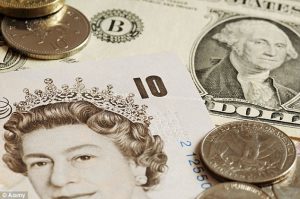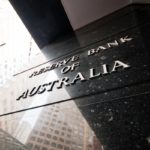 Yesterday’s trade (in GMT terms) saw GBP/USD within the range of 1.3106-1.3337. The pair closed at 1.3146, retreating 0.73% compared to Tuesdays close. It has been the 159th drop in the past 293 trading days and also the steepest one since July 5th, when it plummeted 2.01%. The daily high has been the highest level since July 4th, when a high of 1.3340 was registered. The major pair has increased its slump to 0.32% so far during the current month, after depreciating 8.06% in June.
Yesterday’s trade (in GMT terms) saw GBP/USD within the range of 1.3106-1.3337. The pair closed at 1.3146, retreating 0.73% compared to Tuesdays close. It has been the 159th drop in the past 293 trading days and also the steepest one since July 5th, when it plummeted 2.01%. The daily high has been the highest level since July 4th, when a high of 1.3340 was registered. The major pair has increased its slump to 0.32% so far during the current month, after depreciating 8.06% in June.
At 6:51 GMT today GBP/USD was gaining 0.59% on the day to trade at 1.3224. The pair touched a daily high at 1.3276 during the late phase of the Asian trading session, overshooting the upper range breakout level (R4), and a daily low at 1.3108 during early Asian trade.
On Thursday GBP/USD trading may be influenced by the following macroeconomic reports and other events as listed below.
Fundamentals
United Kingdom
Bank of England policy decision
At 11:00 GMT Bank of England is to announce its decision on monetary policy. The benchmark interest rate (repo rate) will probably be reduced by 25 basis points to a new record low level of 0.25%, according to market expectations. If so, this would be the Banks first move on borrowing costs since its March 5th 2009 policy meeting. The repo rate applies to open market operations of the central bank with other banks, building societies, securities firms etc.
At the same time, the pace of BoE’s monetary stimulus will probably be left without change at GBP 375 billion. The asset-purchasing program, financed by the issuance of central bank reserves was initiated on March 5th 2009, while the scale of this program was increased by GBP 50 billion to the current GBP 375 billion on July 5th 2012.
The minutes from the Banks policy meeting held on June 16th revealed that 6 members of the Monetary Policy Committee voted in favor of keeping borrowing costs and the stock of purchased assets intact, while 3 members supported a rate cut. Policy makers stressed on the potential effects, which the EU membership referendum vote could have on economic outlook.
According to extracts from the Banks Monetary Policy Statement, released in June: ”While consumer spending has been solid, there is growing evidence that uncertainty about the referendum is leading to delays to major economic decisions that are costly to reverse, including commercial and residential real estate transactions, car purchases, and business investment. As the Committee has previously noted, potential referendum effects are making economic data releases more difficult to interpret, and the Committee is being more cautious in drawing inferences from them than would normally be the case.”
”As the Committee set out last month, the most significant risks to the MPC’s forecast concern the referendum. A vote to leave the EU could materially alter the outlook for output and inflation, and therefore the appropriate setting of monetary policy. Households could defer consumption and firms delay investment, lowering labor demand and causing unemployment to rise. Through financial market and confidence channels, there are also risks of adverse spill-overs to the global economy.”
Following the referendum, in a statement on June 30th, Bank of England Governor, Mark Carney, hinted at additional stimulus during the summer. According to extracts from that speech: ”As the MPC said prior to the referendum, the combination of these influences on demand, supply and the exchange rate could lead to a materially lower path for growth and a notably higher path for inflation than set out in the May Inflation Report. In such circumstances, the MPC will face a trade-off between stabilising inflation on the one hand and avoiding undue volatility in output and employment on the other. The implications for monetary policy will depend on the relative magnitudes of these effects.”
”In my view, and I am not pre-judging the views of the other independent MPC members, the economic outlook has deteriorated and some monetary policy easing will likely be required over the summer.”
”I can assure you that in the coming months the Bank can be expected to take whatever action is needed to support growth subject to inflation being projected to return to the target over an appropriate horizon, and inflation expectations remaining well anchored.”
A rate cut would be a strong bearish signal for the Sterling.
United States
Initial, Continuing Jobless Claims
The number of people in the United States, who filed for unemployment assistance for the first time during the business week ended on July 8th, probably rose to 265 000, according to market consensus, from 254 000 in the preceding week. The latter has been the lowest number of claims since the business week ended on April 15th, when a revised up 248 000 claims were reported.
The 4-week moving average, an indicator lacking seasonal effects, was 264 750, marking a drop by 2 500 compared to the preceding weeks revised up average.
The business week, which ended on July 1st, has been the 70th consecutive week, when jobless claims stood below the 300 000 threshold, which suggested a healthy labor market. It has been the longest streak in 43 years.
Initial jobless claims number is a short-term indicator, reflecting lay-offs in the country. In case the number of claims met expectations or increased further, this would have a moderate bearish effect on the US dollar.
The number of continuing jobless claims probably rose to the seasonally adjusted 2 128 000 during the business week ended on July 1st, according to the median forecast by experts, from 2 124 000 in the preceding week. The latter represented a drop by 44 000 compared to the revised up number of claims reported in the week ended on June 17th. This indicator reflects the actual number of people unemployed and currently receiving unemployment benefits, who filed for unemployment assistance at least two weeks ago.
The US Department of Labor is to release the weekly report at 12:30 GMT.
Producer Prices
Annual producer prices in the United States probably fell for a second consecutive month in June, edging down 0.1%, according to the median estimate by experts. In May prices dipped at an annual rate of 0.1%. The Producer Price Index reflects the change in prices of over 8 000 products, sold by manufacturers during the respective period. The PPI differs from the Consumer Price Index (CPI), which measures the change in prices from consumer’s perspective, due to subsidies, taxes and distribution costs of different types of manufacturers in the country. In case producers are forced to pay more for goods and services, they are more likely to pass these higher costs to the end consumer. Therefore, the PPI is considered as a leading indicator of consumer inflation. In case annual producer prices fell at a faster rate than anticipated, this would have a limited-to-moderate bearish effect on the US dollar.
The nation’s annualized core producer price inflation, which excludes prices of volatile categories such as food and energy, probably decelerated to 1.0% in June from 1.2% in May. The latter has been the fastest annual increase in the core PPI since February, when the index gained 1.2%. The Bureau of Labor Statistics is expected to report on the official PPI performance at 12:30 GMT.
Fed Speakers
Markets will be paying attention to the statements by several FOMC members. At 15:15 GMT the Fed President for Atlanta, Dennis Lockhart, is expected to speak, followed by the Fed President for Kansas City, Esther George, at 17:15 GMT. Any remarks regarding the US economic outlook or the Banks monetary policy stance would certainly boost USD volatility.
Bond Yield Spread
The yield on UK 2-year government bonds went as high as 0.194% on July 13th, after which it closed at 0.124% to lose 7.1 basis points (0.071 percentage point) compared to July 12th.
Meanwhile, the yield on US 2-year government bonds climbed as high as 0.693% on July 13th, after which it fell to 0.665% at the close to lose 2.4 basis points (0.024 percentage point) compared to July 12th.
The spread between 2-year US and 2-year UK bond yields, which reflects the flow of funds in a short term, widened to 0.541% on July 13th from 0.494% on July 12th. The July 13th yield spread has been the highest one so far this year.
Daily, Weekly and Monthly Pivot Levels
By employing the Camarilla calculation method, the daily levels of importance for GBP/USD are presented as follows:
R1 – 1.3167
R2 – 1.3188
R3 (Range Resistance – Sell) – 1.3210
R4 (Long Breakout) – 1.3273
R5 (Breakout Target 1) – 1.3347
R6 (Breakout Target 2) – 1.3378
S1 – 1.3125
S2 – 1.3104
S3 (Range Support – Buy) – 1.3082
S4 (Short Breakout) – 1.3019
S5 (Breakout Target 1) – 1.2945
S6 (Breakout Target 2) – 1.2914
By using the traditional method of calculation, the weekly levels of importance for GBP/USD are presented as follows:
Central Pivot Point – 1.3031
R1 – 1.3266
R2 – 1.3576
R3 – 1.3811
R4 – 1.4046
S1 – 1.2721
S2 – 1.2486
S3 – 1.2176
S4 – 1.1866
In monthly terms, for GBP/USD we have the following pivots:
Central Pivot Point – 1.3817
R1 – 1.4517
R2 – 1.5722
R3 – 1.6422
R4 – 1.7121
S1 – 1.2612
S2 – 1.1912
S3 – 1.0707
S4 – 0.9501





